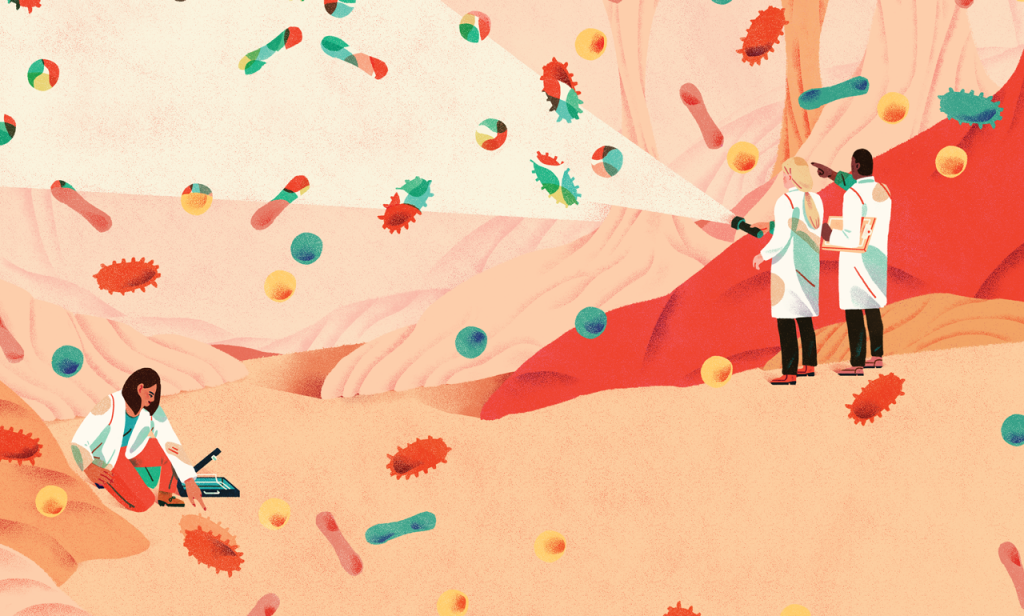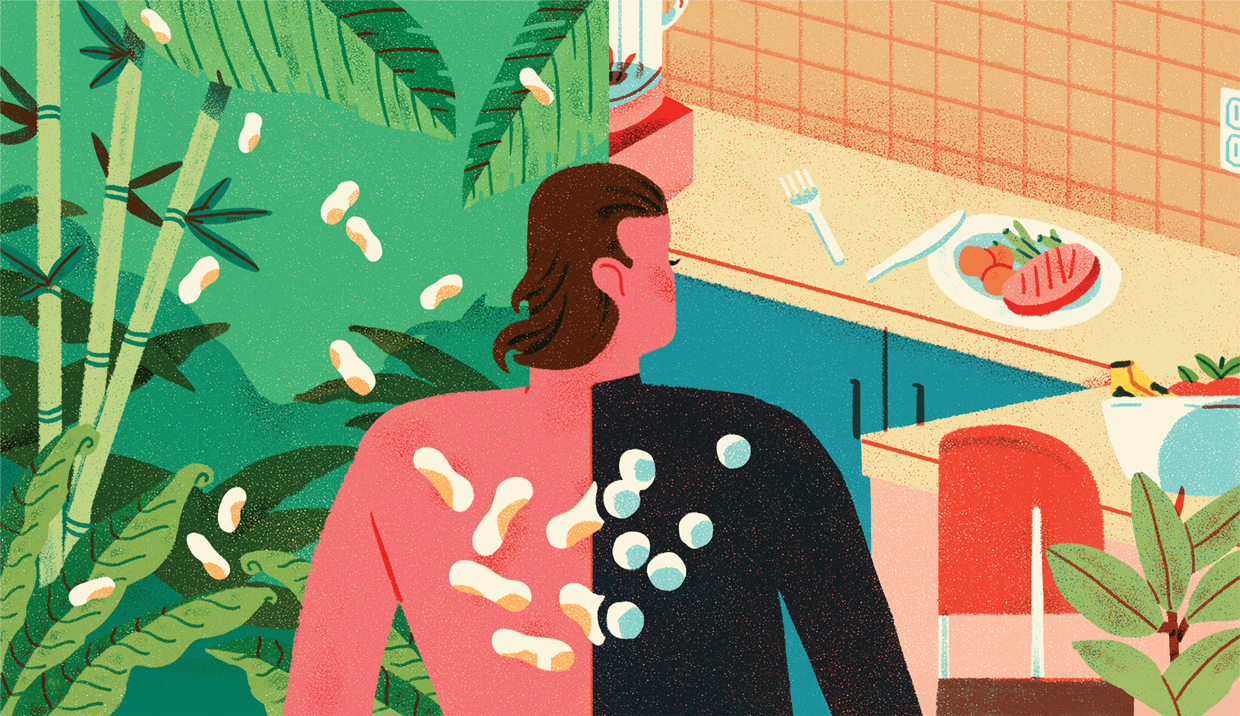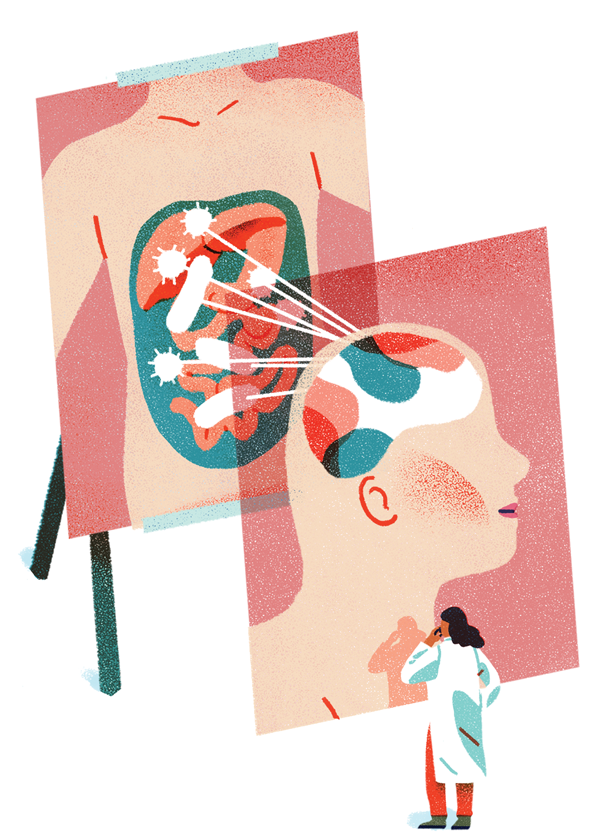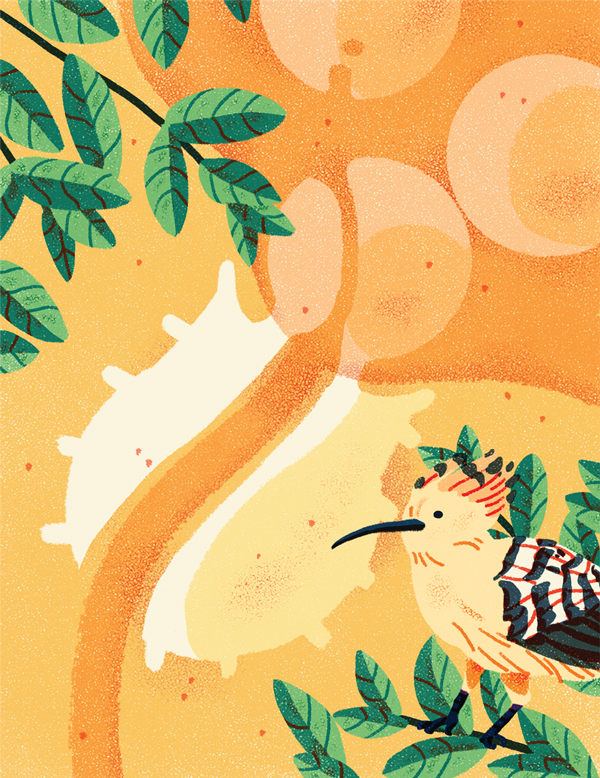By: Hannah Hoag
8 Jun, 2017

Microbes are pretty much everywhere, occupying the same space we do, colonizing our skin, mouths and guts. Coming into contact with a pathogenic microbe, such as the bacterium Vibrio cholerae in contaminated food or water, can lead to disease. But most of the time, we’re quite agreeably bestrewn with microbes and suffer no ill effects.
Until recently, the human microbiome – the assemblage of bacteria, viruses and fungi that live on and in us – has been neglected by science, seen as interesting only when it leads to infection. But a growing body of research suggests that the human microbiome has tremendous influence on many aspects of an individual’s health, from allergies to neurological disorders to healthy childhood development.
CIFAR fellows in the new Humans & the Microbiome program are looking at all of this and more. They’re examining everything from how the microbiome has changed across generations, geographies and ethnicities; to how it has co-evolved with humans to help us adjust to changing food supplies and new diseases; to how it may even have guided human behaviour and cultural practices. It turns out that the microbiome can tell us a lot about where we’ve been – and where we’re going. In fact, the collaborative, symbiotic relationship between human host and microbiome is so close, it has been suggested that humans are not individuals but “holobionts” – creatures inseparable from our microorganisms and environment.

Brett Finlay, a microbiologist at the University of British Columbia, had long believed there were many big questions about the microbiome that no one was asking. He was convinced the gut microbiome affected fetal development. He also wondered how practices such as the routine use of antibiotics and Caesarean section, which alter the microbiome, might influence a population or society. Did microbiota, which respond rapidly to environmental change, contribute to human evolution?
“When you talk about human evolution, no one uses the word ‘microbe,’” says Finlay. “And yet we know that as soon as we started cooking our food we changed our microbes, and that could have affected our evolution.” Finlay raised his questions about human development with Janet Rossant, a developmental biologist at Toronto’s Hospital for Sick Children. But the pair never seemed to have time to move the project forward.
Then in 2013, CIFAR issued a global call for proposals, and Finlay and Rossant jumped at the chance to present one. After a series of meetings and discussions, they assembled a wide-ranging cross-disciplinary team of microbiologists, geneticists, developmental and evolutionary biologists and anthropologists from across the globe. The goal: to connect pieces of information that typically aren’t connected in conventional collaborations.
“There are lots of microbiome centres around the world that are looking at the effect of diet on obesity or autism, but no one else is trying to embrace anthropology, development and evolution,” says Finlay.
When you talk about human evolution, no one uses the word ‘microbe,’ and yet we know that as soon as we started cooking our food, we changed our microbes, and that could have affected our evolution.
Rossant, who co-directs the Humans & the Microbiome program with Finlay, says it gives team members a chance to look at communities around the world in terms of people’s relationship with the microbiome. “How does that affect their health and their societal evolution? Can we understand how things have changed over time and how that is influencing human health today?”
Each adult human co-exists with trillions of microbes, a process now thought to begin even before birth. When a baby is pushed through the birth canal it picks up additional bacterial cultures from its mother, which will later colonize its gut. Babies born by Caesarean section encounter skin microbes instead of vaginal ones, giving them a different microbial makeup at birth. In the weeks and years that follow, the infant’s microbiome grows and becomes more diverse, picking up new microbes from breastfeeding, a grandparent’s cuddles and the family dog’s sloppy licks.
Most of these microbes live in our guts, particularly in the large intestine, and for many years scientists cared little about them. “For over a century, we regarded the gut microbiota as a dump,” says CIFAR Senior Fellow Eran Elinav, an immunologist at the Weizmann Institute of Science in Israel. “Many of us believed they were not doing anything important.”

Studying gut bacteria was also an especially taxing pursuit. Not only was it stinky work, scientists also considered most of the species to be “unculturable.” That is, it wasn’t feasible to isolate them in the lab because it was hard to identify – and then recreate – the conditions they thrived in.
Significant advances in molecular biology and technology have changed that. DNA sequencing now allows scientists to sift through massive amounts of genetic material to identify microbes and read their genomes. Now that we’re starting to understand what molecules microbes produce, we’re beginning to dig more deeply into their roles in human health and disease. In addition to manufacturing a number of essential vitamins we need to stay alive, microbes are considered necessary for normal development. These microbes help the infant, child and adult process nutrients, manage metabolism and keep pathogens in check.
Since early in the 20th century, people have engaged in a war on microbes, trying to clear our bodies of harmful bacteria that could cause infection. Vaccines have eradicated smallpox; sanitation and water treatment have decimated cholera in many parts of the world; and antibiotics now treat previously lethal childhood diseases such as scarlet fever.
“It’s worked terrifically well,” says Finlay. A hundred years ago, 30 per cent of children died of infections; now it’s less than 0.1 per cent. The lifespan of the average American has doubled in the past 150 years, from 40 to 80 years. “But the thinking has been that if clean is good, then cleaner is better,” he adds. “We’re only just starting to realize that by removing microbes, our bodies don’t function normally.”
We’re only just starting to realize that by removing microbes, our bodies don’t function normally.
In the same time frame there has been a steady rise in conditions such as asthma, diabetes, inflammatory bowel disease, autism, ADHD, depression, stress and anxiety – the list goes on. “When you look at diseases of the developed or Western world, you can find, in just about all of them, a microbial link,” says Finlay.
Asthma is a prime example. In Canada, the number of children with asthma has quadrupled in the past 20 years. Urban living, early-life antibiotics, Caesarean delivery and formula feeding have all been associated with asthma, and all suggest a strong link between asthma and changes in the microbes that live in the gut.
Finlay and his colleagues went looking for bacteria that might have influenced the rising asthma rates. They analyzed stool samples from more than 300 Canadian infants, and found that three-month-old infants who had low or undetectable levels of four bacteria – Faecalibacterium , Lachnospira , Veillonella and Rothia – were far more likely to have wheezing or skin allergies by their first birthdays. Wheezing and skin allergies are the early signs of asthma.
And the team went further. They cultured microbiomes of the babies who would go on to develop asthma and infected a group of germ-free mice with the mixture. Some of the mice were then given the four protective bacteria. Those who received the bacteria did not develop lung inflammation; the other mice did.
“We’re not yet smart enough to say, ‘Your three-month-old is lacking these four microbes. Give him this probiotic,’; or to replenish these microbes after a course of antibiotics. But it will slowly come to that,” Finlay says.
Obesity is another disease of the developed world with microbial links. Elinav, an MD/Ph.D studying host-microbiome interactions is interested in recurrent obesity. Many overweight people find short-term success in dieting, only to regain the weight within a year and repeat the cycle. “Almost 80 per cent of the world’s overweight population suffers from this phenomenon,” he says.
Elinav has found that gut microbiota can drive this yo-yo cycle. In a recent study, published in Nature, obese mice had their high-fat diets swapped with more balanced diets until their weight returned to normal, along with metabolic factors such as their blood sugar levels. But their gut bacteria did not change back to normal. And just like human yo-yo dieters, when previously obese mice were given access to high-fat food again, they gained weight more rapidly than mice induced with obesity for the first time. When post-dieting mice were given bacteria from the naive mice, their exaggerated yo-yo obesity was prevented.

“Our findings suggest that when you successfully diet, that doesn’t normalize your gut microbiome,” says Elinav. “It holds a ‘memory’ of your past obese episodes and drives you to gain more weight the next time around.”
A growing body of research, mostly from animal studies, suggests that gut microbiota also influence brain development and behaviour. Researchers are beginning to discover that gut microbes can influence the brain through the hormones, metabolites and other molecules they produce. Some mouse studies have found that gut microbiota can drive an animal’s behaviour, for example making it more anxious, less social or more adventurous. What about the interaction between the maternal gut microbiome and the fetus?
We now have some evidence showing that we need the mother’s microbiome in order for the brain to develop properly in the fetus.
Scientists know that genetic and environmental factors contribute to the development of neurological conditions such as anxiety, depression, autism and schizophrenia. Could signals from maternal microbiota cross the placenta and influence brain development?
In unpublished studies, Rossant’s lab found brain changes in mice whose mothers lacked a gut microbiome. Reinstating the gut microbiome in the pups could reverse some of the changes, but not all. “We now have some evidence showing that we need the mother’s microbiome in order for the brain to develop properly in the fetus,” says Rossant.
“It’s very preliminary and we have a lot more work to do. But it’s important,” she says, “because it suggests that when we are thinking about making sure that babies develop well, we have to think not only about making sure they pick up the right bugs [at birth], but also that the mother’s microbiome is in really good shape too.”
With just more than two years behind them, these ambitious collaborative projects are coming to fruition. Without the intensive multi-day meetings that come with CIFAR’s Humans & the Microbiome program, these research collaborations might have emerged more slowly, if at all.
It was an important day for Senior Fellow Hendrik Poinar when the first set of human remains from Senegal arrived at his lab. Poinar, an evolutionary biologist at McMaster University, is well known for his ability to extract ancient DNA from difficult samples. Working with a team including Ibrahima Thiaw of the University Cheikh Anta Diop of Dakar, he will be examining the dental calculus of people who lived in West Africa in the late 1800s and late 1950s to see if their oral microbiomes changed under colonial rule.
Knowing which microbes are there prior to colonization is one step. Another step is to understand how this fits into the historical context. Other team members are two social anthropologists, CIFAR Fellow Frédéric Keck, at the Musée du quai Branly, and Senior Fellow Tamara Giles-Vernick, at the Institut Pasteur, both in Paris. They will interpret the biological analyses by looking at changes that occur when a society undergoes colonialization.
“Each of us have very different perspectives in how we look at bacteria in general, and microbiomes,” says Poinar. “And when you come together, that is where the very best and most interesting science can take place, at the interdisciplinary crossroads.”
The work is exacting. Oral microbes become trapped in microscopically thin mineral layers of dental plaque over time, accumulating year after year in adult life. Poinar and his colleagues are using a wide range of techniques including lasers to ablate the mineral layers and microscopy to identify “ghost cells” that contain the microbial DNA. “Getting the bacteria isn’t that hard, and sequencing isn’t that hard, but these layers are nanometres, microns thick. That kind of dissection is really challenging, and isolating DNA from them even more so,” he says.
The major epidemiological transitions, such as changes to agricultural production, food consumption, migration patterns, urbanization and medical care that came with colonialization, likely had dramatic effects on the microbiomes of people living in West Africa at the time. These changes may have left them more susceptible to malnutrition and disease as they were forced to move away from their normal diets.
“We can look at all of these things in a laboratory, but unless we have insight into what people are doing and why they are doing it, it makes no sense,” says Giles-Vernick. “Social scientists do not separate environment from human beings, but see them as enmeshed in one another, enmeshed in all of the living and nonliving things around them.”
Being part of the Humans & the Microbiome program has changed the way many of these researchers look at their own work. The ongoing discussions and collaboration have let them uncover hidden assumptions and biases. Giles-Vernick, who studies human contact with great apes in equatorial Africa and emerging zoonotic diseases, says the interactions have “really made me think, what is shared and what isn’t shared between humans and great apes? What is the overlap of their intestinal microbiomes?”
All of these threads, when gathered together, raise larger questions about human biology, behaviour and societies. If we have evolved with our microbes – and if they have helped direct that evolution – what is happening to us as we prune and trim our microbiomes? How are we affecting the susceptibility of future generations to emerging infectious diseases or metabolic disorders? Can we learn from our past, to find a path to a healthier future?
“In the last several years, the data is really stacking up to say that we are removing microbes that are part of our normal evolution,” says Finlay. “If we really think the microbiome is important, then we need to know how it is affecting humans on a larger scale.”
Illustrations by Jeannie Phan